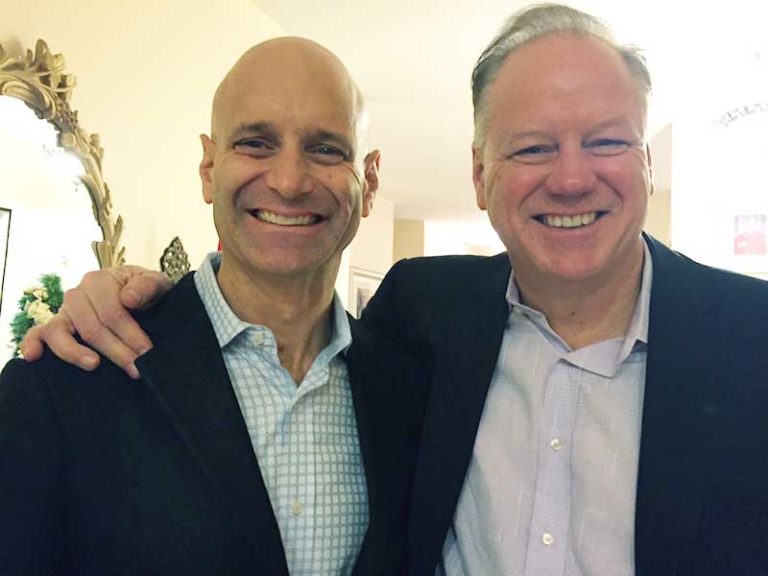Dan M.
Living Donor for brother with PSC and Bile Duct Cancer

In May 2007, a medical team at New York Columbia Presbyterian Hospital conducted its first living donor liver transplant surgery on a bile duct cancer patient. The patient was Kevin, my younger brother. I was the living donor.
Earlier that year, Kevin had been diagnosed with PSC (primary sclerosing cholangitis), a liver disease that slowly damages the bile ducts and can lead to bile duct cancer (cholangiocarcinoma), a disease with low survival rates.
A few months after his PSC diagnosis we learned that Kevin had tested positive for bile duct cancer. It luckily had been detected early, which provided the opportunity for what was then a new approach: treat and kill the cancer cells with radiation and chemotherapy, and then replace the liver and common bile duct via transplant as soon as possible.
However, Kevin’s MELD (Model for End-State Liver Disease) score would have had him waiting a very long time for a cadaver liver. By the time my brother would have qualified for a cadaver transplant, his cancer most likely would have spread beyond the point of it being successful.
Kevin’s doctors brought up the living donor option. He initially refused to allow anyone in our family to volunteer to donate but finally relented and we went forward with the operation.
We awoke to the news that the operation had been successful. They had removed 70% of my liver and put it in my brother, as well as reconstructing his common bile duct.
During our time in recovery, my wife, Doreen, and Kevin’s wife Kelly stood guard. Sleeping in a shared dorm room at the hospital, they were our tireless advocates with the doctors and other hospital personnel.
I experienced a bile duct leakage, which is a fairly common complication with this surgery. After six days, I left the hospital with a drainage tube jutting out from my abdomen, filled with a rust-colored liquid that looked like old antifreeze flowing into a plastic jar. This remained in me for 10 days. Recovery took four months; I (temporarily) lost 25 pounds. By autumn, I was back to work, and running four miles a day.
Kevin and Kelly had a longer road ahead of them. The transplant had worked, but he had to endure multiple follow-up surgeries to address a bile leakage that would not stop. But now, over ten years later, Kevin has long since healed and doing great. We were lucky. And we know it.
Despite advances in medical and surgical science, the demand for organs continues to vastly exceed the number of donors. Here, in New York, only 27% of people age 18 and over have enrolled in the New York State Donate Life Registry. But every ten minutes another person is added to the national transplant waiting list.
We need to encourage more people to sign up to donate organs. We need to make it easier to sign up as an organ donor. We need to take the mystery and fear out of it. We need more happy endings.
Last updated on August 5th, 2022 at 05:06 pm